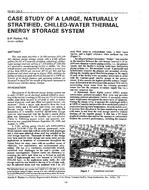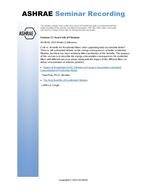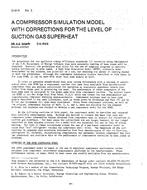Field testing in 70 small commercial buildings in central Florida identified that building cavities were used as part of the air distribution system in 33 buildings. The various building cavity types (number of buildings in parentheses) are: enclosed air-handler support platforms (10), mechanical closets (8), mechanical rooms (6), ceiling spaces (7), wall cavities (6), chases (1), and “other” building cavities (2). Testing found that these building cavities are considerably more leaky than standard ducts and plenums because they are generally not built to the same airtightness standard as ducts. Actual air leakage is a function not only of duct hole size but also pressure differential across the leak sites. Pressure differentials generally range from -0.080 in.WC (-20 Pa) to -0.401 in.WC (-100 Pa) in support platforms, mechanical closets and rooms, wall cavities, and chases. By contrast, ceiling plenums often operate at less than 0.004 in.WC (1 Pa) difference from the occupied space and sometimes at positive pressure with respect to outdoors.
The energy, infiltration, and relative humidity impacts of building cavity duct leakage depend upon the leak airflow rate and the temperature and humidity conditions of the air entering the leaks. Therefore, the location of the building cavity ducts is very important. If the return leak air is drawn from the occupied space, that leakage will have little or no impact on energy, infiltration, or relative humidity. At the other extreme, if the leaking air comes from a hot and humid attic space, the impacts will be large. The interaction of various building cavity duct leaks with eight different building configurations–based on the location of the primary air and thermal boundaries in the ceiling space–is discussed here. The paper concludes that building cavities should not, as a general rule, be used as a part of the air-distribution system. The exception is use of ceiling space return plenums. Ceiling plenums can be designed to operate at near neutral pressure with respect to outdoors and, therefore, can experience little or no duct leakage.
Units: Dual
Citation: Symposium, ASHRAE Transactions, 1998, Vol. 104, Part 2, Toronto, ON
Product Details
- Published:
- 1998
- Number of Pages:
- 10
- File Size:
- 1 file , 140 KB
- Product Code(s):
- D-7715


